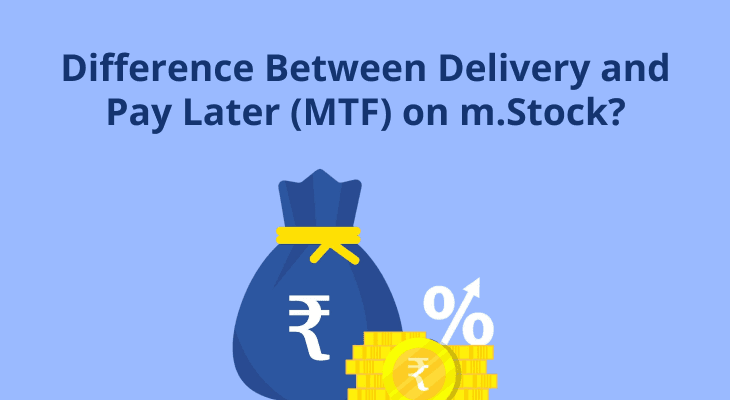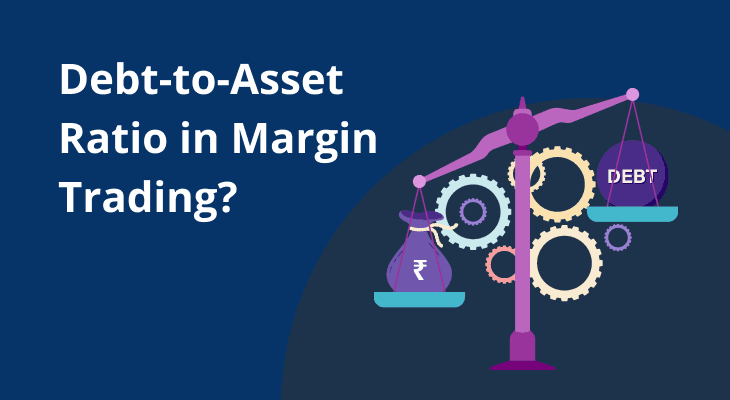
Difference between Margin Trading and Leverage Trading
Contrary to popular opinion, you don’t require huge investment capital to trade in the Indian stock market. Margin trading and leverage trading are two facilities that you can use to initiate positions in stocks and other securities, even if you don’t possess the necessary investment capital. Wish to know more about these two facilities and the difference between margin and leverage trading? Here’s an in-depth guide that can help you understand these two concepts.
What is a Margin?
Margin is defined as the amount of money that you borrow from your stockbroker to purchase an asset. Margin trading facility is usually provided by stockbrokers against shares that you hold in your demat account. You can quickly borrow money by pledging shares in your demat account and using them to trade in your preferred asset class.
However, the stockbroker usually levies interest in exchange for providing such a facility. The rate of interest on the margin trading facility varies from one broker to another and can range from 6.5% per annum to 18% per annum. The interest is levied up until you repay the entire borrowed amount. Additionally, you may also have to pay a nominal amount as pledging charges.
What is Leverage?
Leverage, on the other hand, is an option that allows you to enter into large positions by simply depositing a small percentage of the total trade value as a margin. Leverage is often expressed as a ratio (5:1 or 10:1) or as a multiple (5x or 10x).
In the case of a 5x or 5:1 leverage, your purchasing power would be five times that of the amount you deposit as a margin. For instance, you can enter into a position as large as ₹25,000 by depositing a margin of just ₹5,000.
The amount of leverage offered on trades varies depending on the stockbroker, the segment that you’re trading in, and a few other factors. The leverage trading facility is commonly offered on segments such as intraday equity, futures, and options.
What is the Difference Between Margin and Leverage Trading?
Now that you’re aware of these two concepts let’s take a look at the key points of difference between margin and leverage trading.
Particulars | Margin Trading | Leverage Trading |
|---|---|---|
Definition | Margin trading involves borrowing funds from the stockbroker for trading by pledging stocks present in your demat account. | Leverage trading involves entering into large positions by paying just a small fraction of the total trade value. |
Collateral | To make use of this facility, you need to pledge stocks in your demat account as collateral. | You don’t have to pledge any asset as collateral to avail leverage for your trades. |
Maximum Amount | The amount of margin that you can borrow from your stockbroker depends on the value of the stocks pledged as collateral. | The amount of leverage that you can use for your trades depends on factors such as the stockbroker, the segment you’re trading in, and the stock exchange. |
Costs | There are several costs associated with margin trading. Interest on the amount borrowed, pledge creation charges, and pledge removal charges are a few key costs that you need to account for. | There are no costs associated with leverage trading. |
Level of Risk | The risk associated with margin trading is low. If the market moves against your expectation, your loss is limited to the interest that you pay towards the borrowed amount. | Leverage trading can be very risky. If the market moves against your position, your losses may be amplified significantly. |
Availability | The margin trading facility is only available for one segment - equity delivery. Also, not all stocks are available for margin trading. | Leverage is available for intraday equity, futures, and options segments. |
With this, you must now be aware of the differences between margin trading and leverage trading. Both these facilities are must-have tools in the arsenal of an investor. Judicious use of margin and leverage allows you to multiply your investment potential and returns. If you want to practice leverage trading, then look no further as m.Stock offers Pay Later (MTF) at one of the lowest interest rates in India, starting from 6.99% p.a. When you avail MTF, you enjoy up to 80% funding in 1,070+ Pay Later stock list and unlimited holding period. So. open your m.Stock demat account now!
FAQ
What Are Margin and Leverage in Trading?
Margin is the amount you borrow from your broker to trade by pledging shares in your demat account. It helps you access additional funds to invest in larger positions. Leverage, on the other hand, magnifies your purchasing power, enabling you to trade with a fraction of the total value. While margin involves borrowing, leverage amplifies gains and losses, making both valuable yet risky trading tools.
What Is Minimum Margin and Why Is It Important?
Minimum margin is the smallest amount you must deposit or maintain in your account to trade using margin or leverage. It acts as a safety buffer to cover potential losses and ensures your positions remain active even during market volatility. Failing to meet this requirement can lead to forced liquidation. Understanding minimum margin helps manage risks and maintain financial stability while trading.
How Does Margin Differ from Leverage?
Margin involves borrowing funds from your broker by pledging stocks in your demat account, usually for equity delivery trades. It incurs costs like interest and pledging fees. Leverage, however, allows you to trade larger positions by depositing only a fraction of the trade value, primarily in intraday or F&O segments. While margin is less risky, leverage significantly amplifies both profits and losses.


